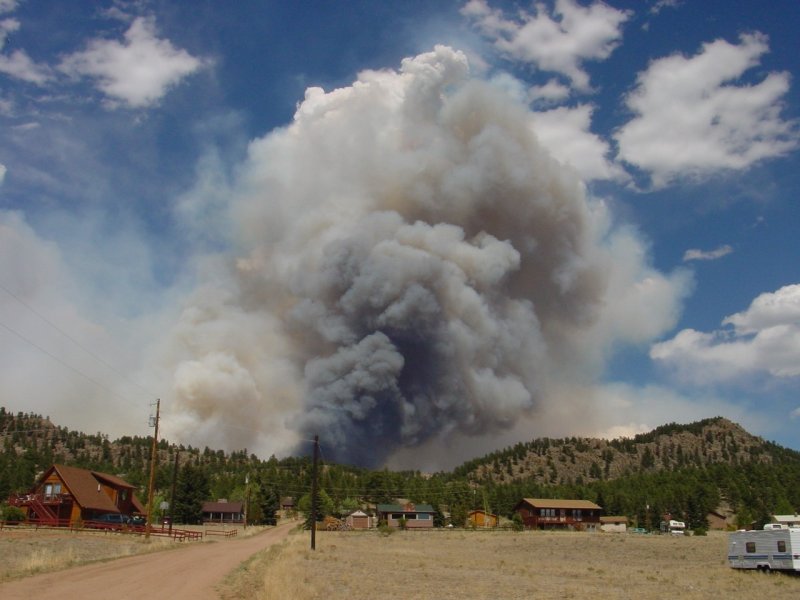Why the inevitable wildfire doesn’t mean inevitable home losses
Posted: July 27, 2017Source: Treesource
By David Atkins

Colorado’s Hayman fire burned 138,000 acres and 133 homes in 2002. U.S. Forest Servicephoto.
Protecting Homes from Wildfires
One hundred million Americans live in or near fire-prone forests and grasslands. Every summer, some of those forests erupt in flames that quickly ignite homes, some leaping ahead miles in a few minutes.
The CBS news magazine “60 Minutes” recently devoted an episode to the nation’s wildfire problem – why the fires are growing larger and more difficult to fight, and what homeowners can do to protect their property from the inevitable flames.
The report includes an interview with a former firefighter and with the former deputy secretary of Agriculture who oversaw the U.S. Forest Service, an agency that now spends more than half of its annual budget on firefighting. They provided the background.
Then “60 Minutes” reporter Stephen Inskeep traveled to Missoula, Montana, and the Forest Service’s Fire Sciences Lab. There, fire scientist Jack Cohen explained how the inevitable isn’t actually inevitable. Yes, the fires will continue to burn. But homes, even when confronted with wildfires, don’t have to burn.
Cohen spent a good part of his career studying how houses catch on fire, knowing that he could then devise strategies for protecting homes. Early on, he saw that it was “the little things” that catch a house on fire.
Fluffy cushions on the deck furniture. Firewood stacked against the back porch. Pine needles in the gutters. Bushes planted right next to the house. Wooden shingles.
Later this summer, Treesource will take a deep dive for multiple weeks into “Living with Fire.” We think this CBS News report will provide you with a primer, and whet your appetite for what’s to come.
It’s food for thought as another wildfire season kicks into gear in some parts of the country, and knocks at the door in others.

